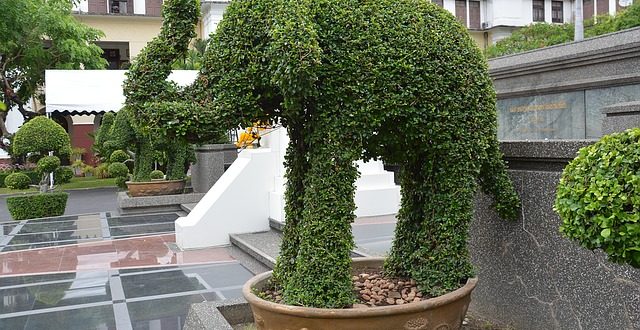Topiary is the art of shaping trees and shrubs into all kinds of shapes and sizes. If done well it will add evergreen structure to your garden, creating an amazing focal point in your garden and bringing you a great sense of achievement.
Topiary is thought to have originated from the Romans and their formal gardens. They had slaves called “topiarius” who maintained the ornamental gardens “topia”. It became popular again in the Middle Ages and in Renaissance Italy. Skilled topiarists creating things from bears to sailing boats. Now it’s back in fashion.
Before you start
- You need to ensure you’ve got the right plants. The best ones to get are evergreen with small leaves and dense foliage; this will make shaping easier and the final result more professional. The most popular being the Yew (Taxus Baccata) and various forms of Box (Buxus Sempervirens). Choose smaller plants as they will acclimatise to local conditions quicker, two 30cm high box cuttings would be a good starting point.
- A good pair of cutting shears for shaping
- Do your research in books and gardens for ideas. An inspirational garden to visit is Levens Hall in Cumbria, created 300 years ago by French designer Monsieur Guillaume Beaumont, visit Levens Hall and Gardens for more information.
Creating shapes
- When you’ve decided the shape you want to create take a moment to think about the best way to sculpt it. For example to create a spiral, tie string to the top of the cutting and circle it around the plant and down to the base to create a guideline for the shape.
- You can use a 3D frame for more complex shapes; there are many different forms available. Place the frame over the plant and then begin sculpting.
Tips and hints
- Practise makes perfect; topiary is usually done freehand and it can take some time to create even lines and curves, whilst you’re still gaining experience and building your confidence you can use shaped wires as a guide.
- A little patience; cut off small amounts at a time as you watch the shape develop: Cutting too large could ruin the desired shape and hold you back as you wait longer for the plant to grow back again.
- Sharp angles; Use plants with smaller leaves to create the necessary angles.
- An easier alternative; If it all seems too tricky, you can create the illusion of topiary by growing plants such as ivy over the frame of a wire shape, you’ll have greater control over your desired shape.
- If you don’t think you have the patience and desire instant results you can purchase topiary plants from specialist nurseries.
 Gardeners Club The Gardeners Club is a free to join online club for everyone with an interest in gardening and gardens.
Gardeners Club The Gardeners Club is a free to join online club for everyone with an interest in gardening and gardens.






